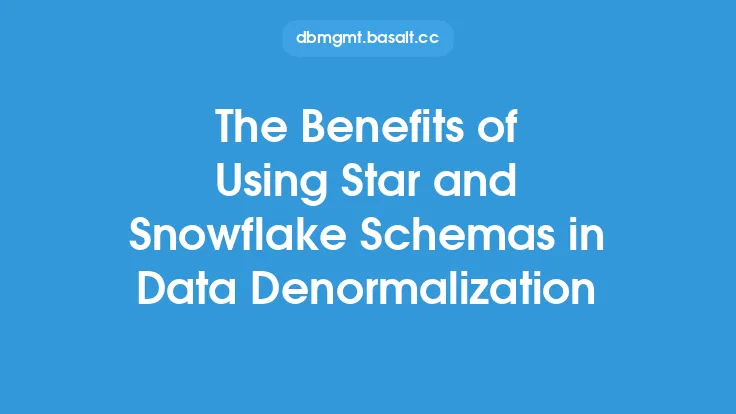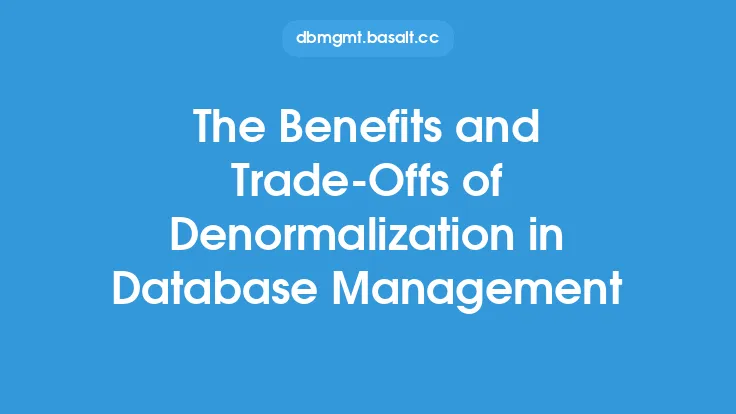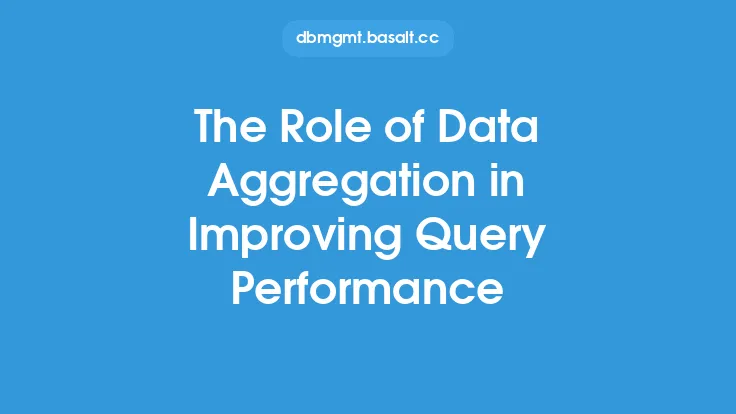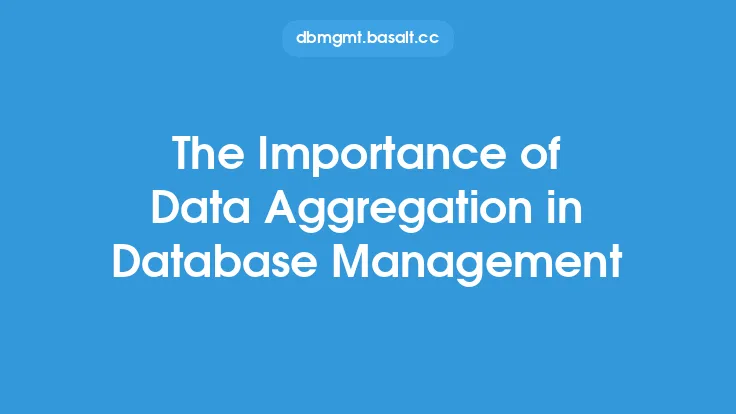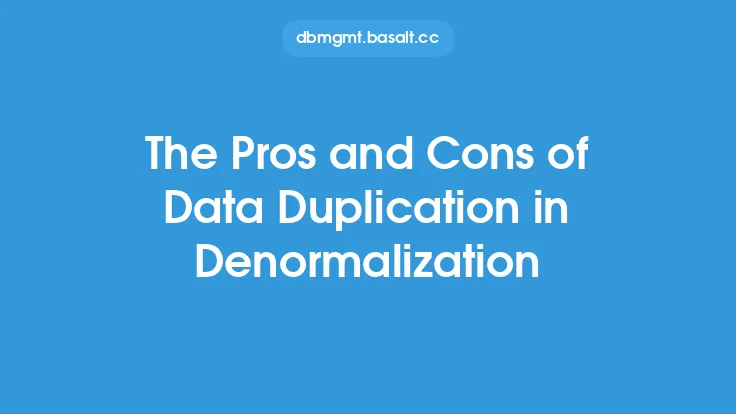Data denormalization is a strategy used in database design to improve the performance of queries by reducing the number of joins required to retrieve data. One key aspect of data denormalization is data aggregation, which involves combining data from multiple sources into a single, unified view. This approach can provide numerous benefits, including improved query performance, enhanced data analysis, and better decision-making.
Introduction to Data Aggregation
Data aggregation is the process of gathering and combining data from multiple sources to provide a more comprehensive and unified view of the data. In the context of data denormalization, data aggregation involves combining data from multiple tables or sources into a single table or view, reducing the need for joins and improving query performance. Data aggregation can be performed using various techniques, including rollup, drill-down, and grouping, to provide different levels of granularity and detail.
Benefits of Data Aggregation in Data Denormalization
The benefits of data aggregation in data denormalization are numerous. By combining data from multiple sources, data aggregation can improve query performance by reducing the number of joins required to retrieve data. This can result in faster query execution times and improved overall system performance. Additionally, data aggregation can enhance data analysis by providing a more comprehensive and unified view of the data, making it easier to identify trends and patterns. Data aggregation can also improve data quality by reducing data redundancy and inconsistencies, and providing a single, authoritative source of truth.
Types of Data Aggregation
There are several types of data aggregation, including rollup, drill-down, and grouping. Rollup aggregation involves combining data from multiple sources into a single, summary view, while drill-down aggregation involves providing more detailed data from a summary view. Grouping aggregation involves combining data from multiple sources based on common attributes or characteristics. Each type of data aggregation provides a different level of granularity and detail, and can be used to support different types of queries and analysis.
Data Aggregation Techniques
Several data aggregation techniques can be used to support data denormalization, including materialized views, indexed views, and aggregate tables. Materialized views involve storing the results of a query in a physical table, reducing the need for joins and improving query performance. Indexed views involve creating an index on a view, improving query performance by providing faster access to the data. Aggregate tables involve storing aggregated data in a separate table, reducing the need for joins and improving query performance.
Data Aggregation and Data Warehousing
Data aggregation is also closely related to data warehousing, which involves storing data in a centralized repository for analysis and reporting. Data aggregation can be used to support data warehousing by providing a unified view of the data, and by reducing the need for joins and improving query performance. Data warehousing can also provide a platform for data aggregation, by providing a centralized repository for storing and managing aggregated data.
Challenges and Limitations of Data Aggregation
While data aggregation can provide numerous benefits, there are also several challenges and limitations to consider. One of the main challenges of data aggregation is data quality, as aggregated data can be affected by data inconsistencies and errors. Additionally, data aggregation can be complex and time-consuming, requiring significant resources and expertise. Data aggregation can also impact data freshness, as aggregated data may not reflect the latest changes or updates.
Best Practices for Data Aggregation
To get the most out of data aggregation, several best practices can be followed. First, it's essential to define clear goals and objectives for data aggregation, and to identify the types of queries and analysis that will be supported. Next, it's essential to select the right data aggregation technique, based on the specific needs and requirements of the application. Finally, it's essential to monitor and maintain data aggregation, to ensure that the data remains accurate and up-to-date.
Conclusion
In conclusion, data aggregation is a powerful technique for improving query performance and enhancing data analysis in data denormalization strategies. By combining data from multiple sources, data aggregation can provide a more comprehensive and unified view of the data, making it easier to identify trends and patterns. While there are several challenges and limitations to consider, the benefits of data aggregation make it an essential aspect of data denormalization, and a key component of any data management strategy. By following best practices and selecting the right data aggregation technique, organizations can unlock the full potential of their data, and make better decisions based on accurate and timely information.

